Abstract
A rise of body temperature into a range lethal to mice preceded death in groups of mice injected with amphetamine sulphate. At dose levels from 8.8 to 66.7 mg/kg, mortality was associated with the extent of rise in body temperature of the mice, irrespective of the actual dose administered. Isolated mice given comparable doses of amphetamine also showed a marked increase in body temperature. However, except in a very few cases, it did not rise into the range found to be lethal. Amphetamine was more toxic to isolated mice subjected to foot-shock than to isolated mice housed under normal conditions. This has also been shown to be related to the extent of rise in body temperature of the mice. The effect of a number of substances on grouped amphetamine toxicity was investigated. Chlorpromazine and phenoxybenzamine partially antagonized the sharp rise in temperature following the administration of amphetamine, and also significantly reduced mortality. Calcium acetylsalicylate was without effect on the rise of body temperature or on mortality. Both the hypothermic compound 4-methyl-5-(β-chlorethyl)-thiazole (S.C.T.Z.) and L-thyroxine sodium potentiated the rise in temperature and caused a significant increase in mortality.
Full text
PDF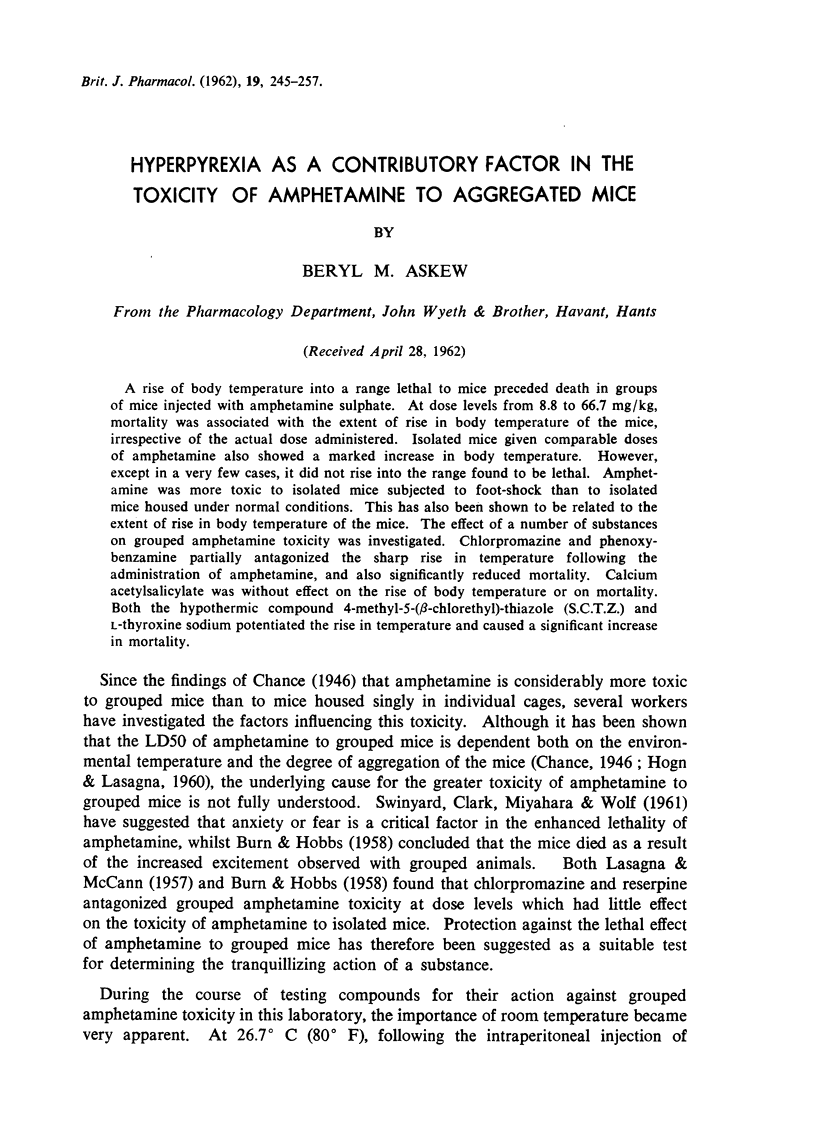
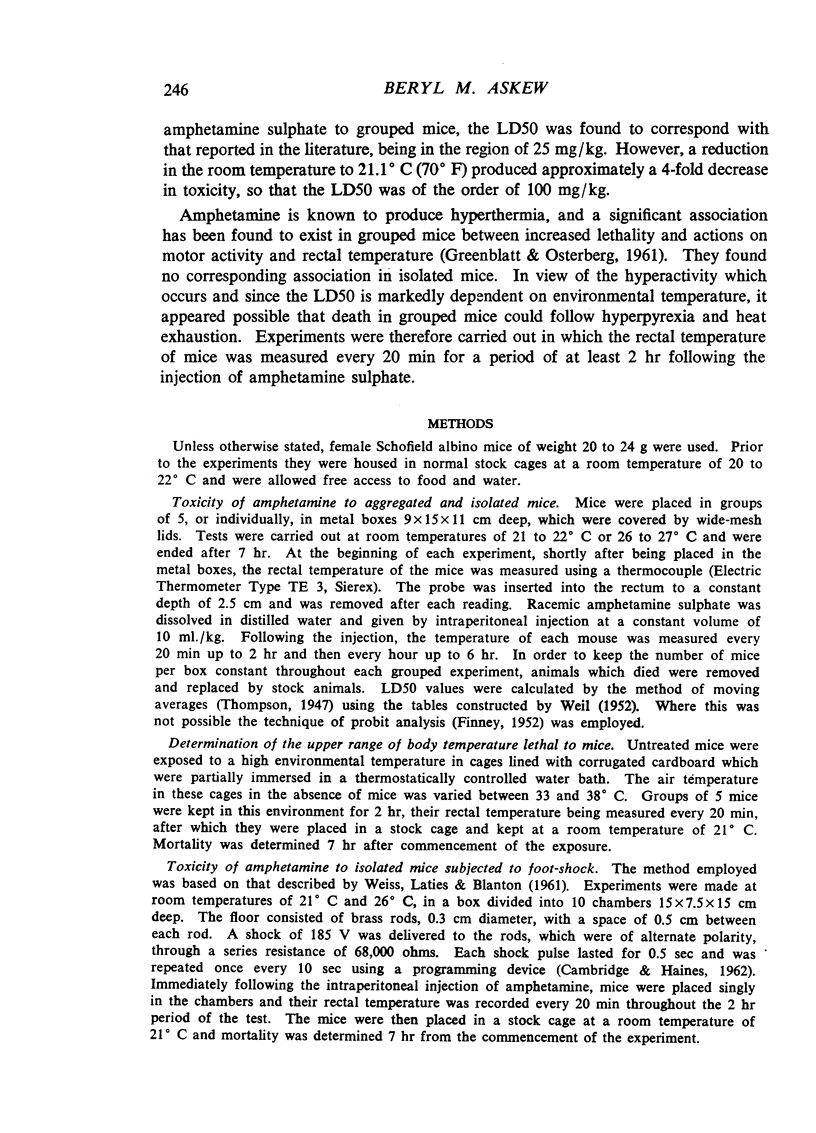

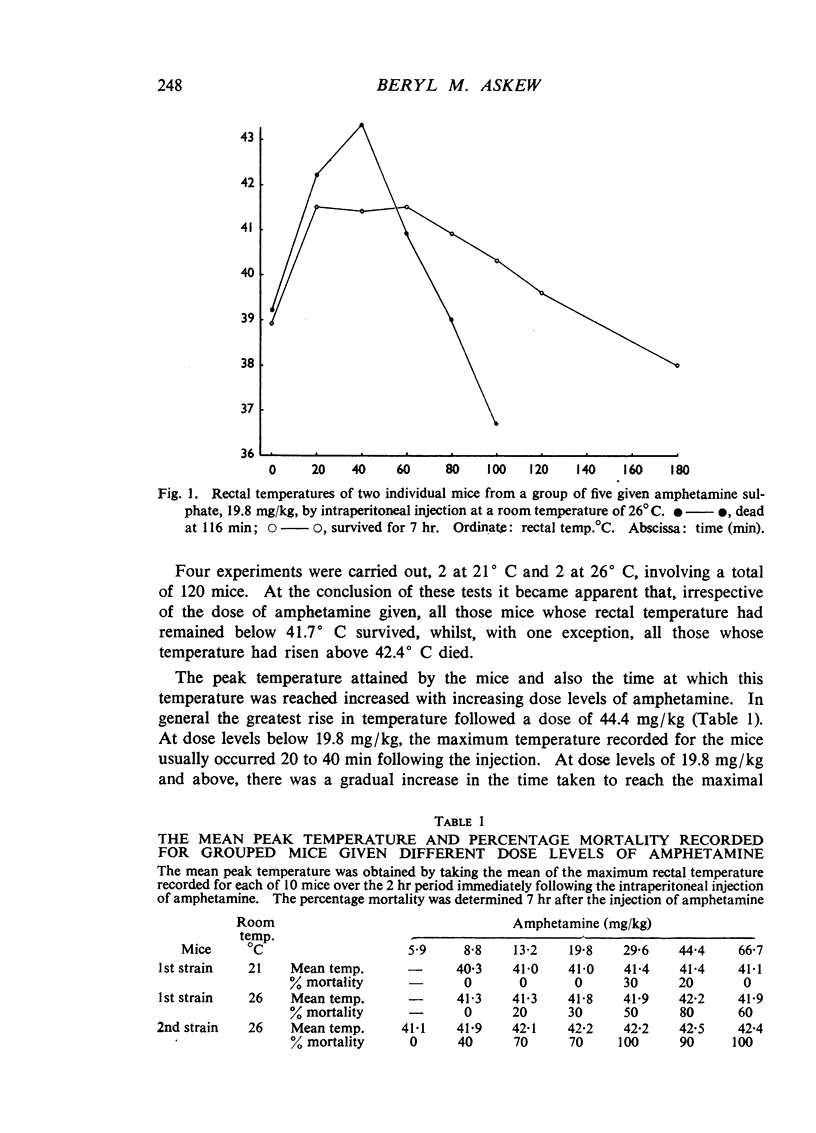
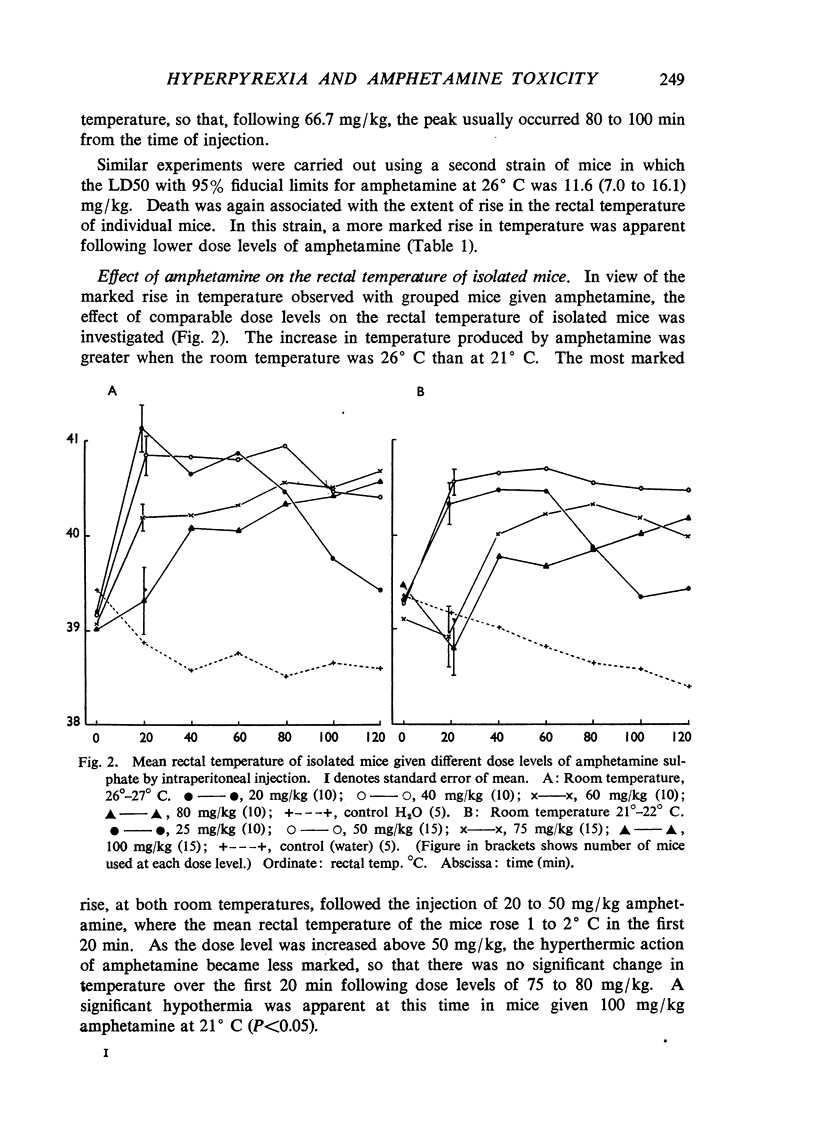
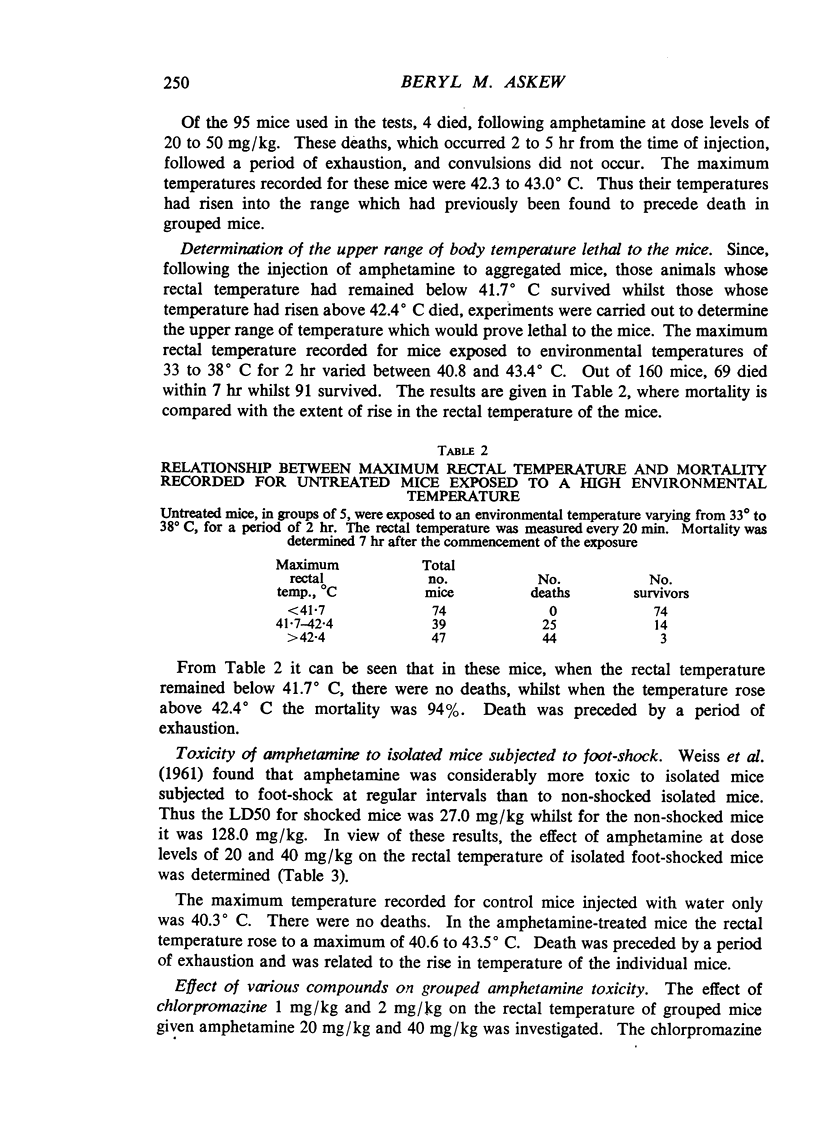
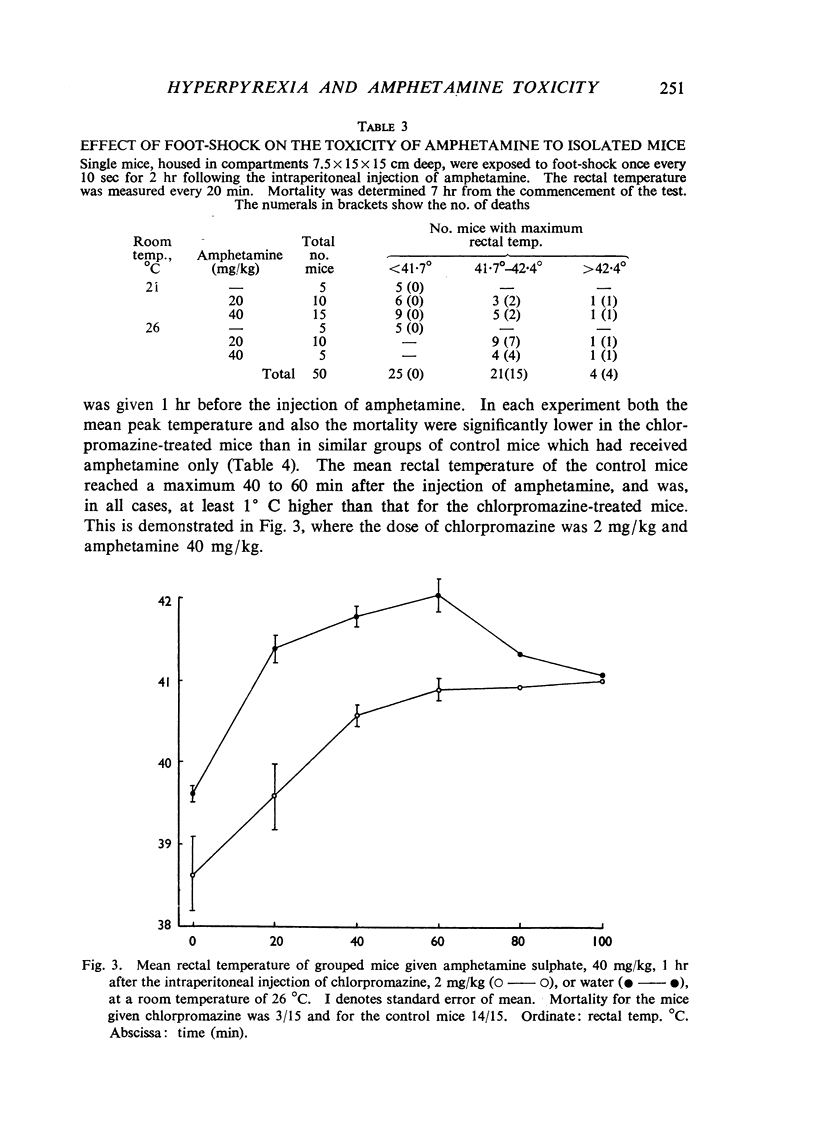
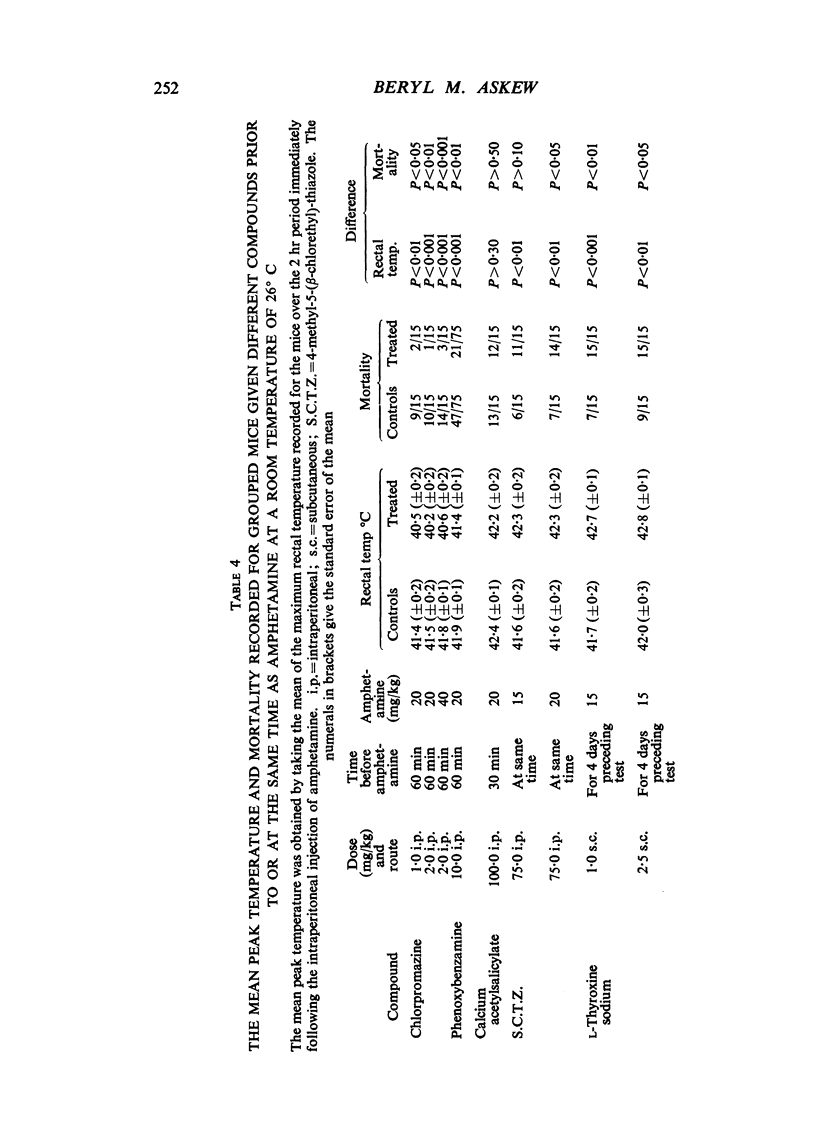
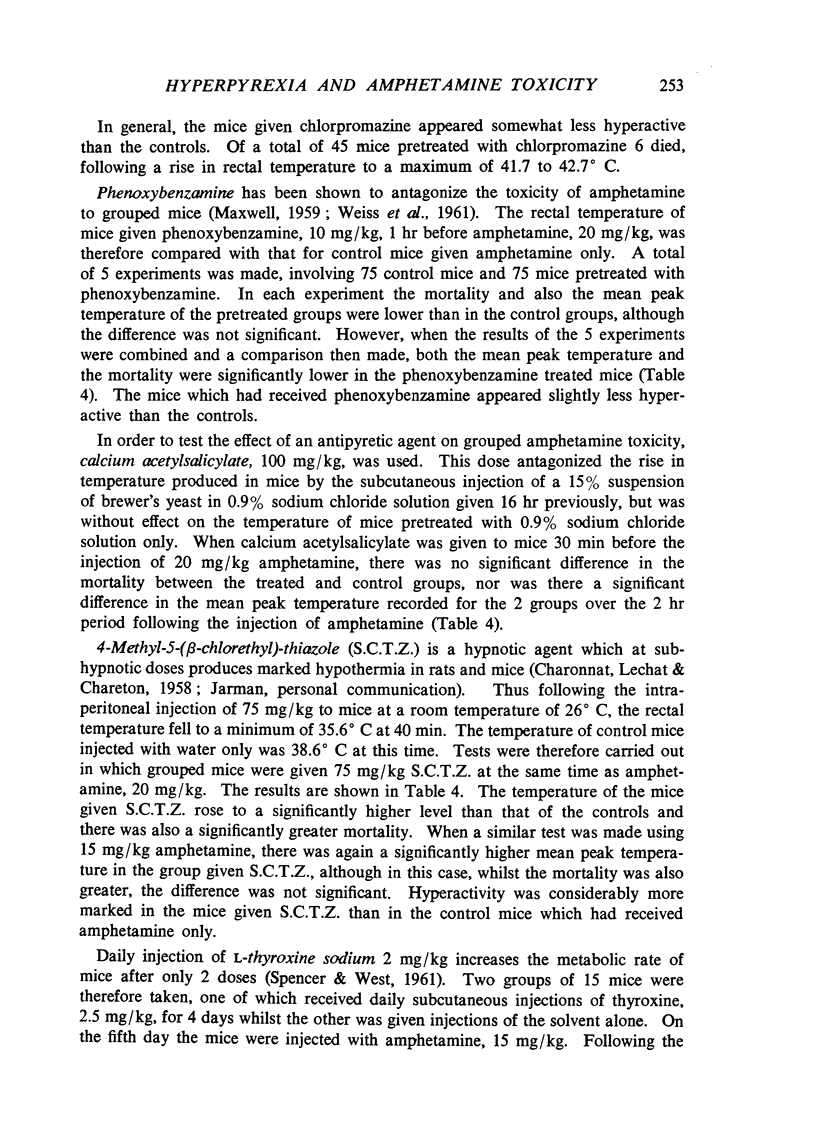
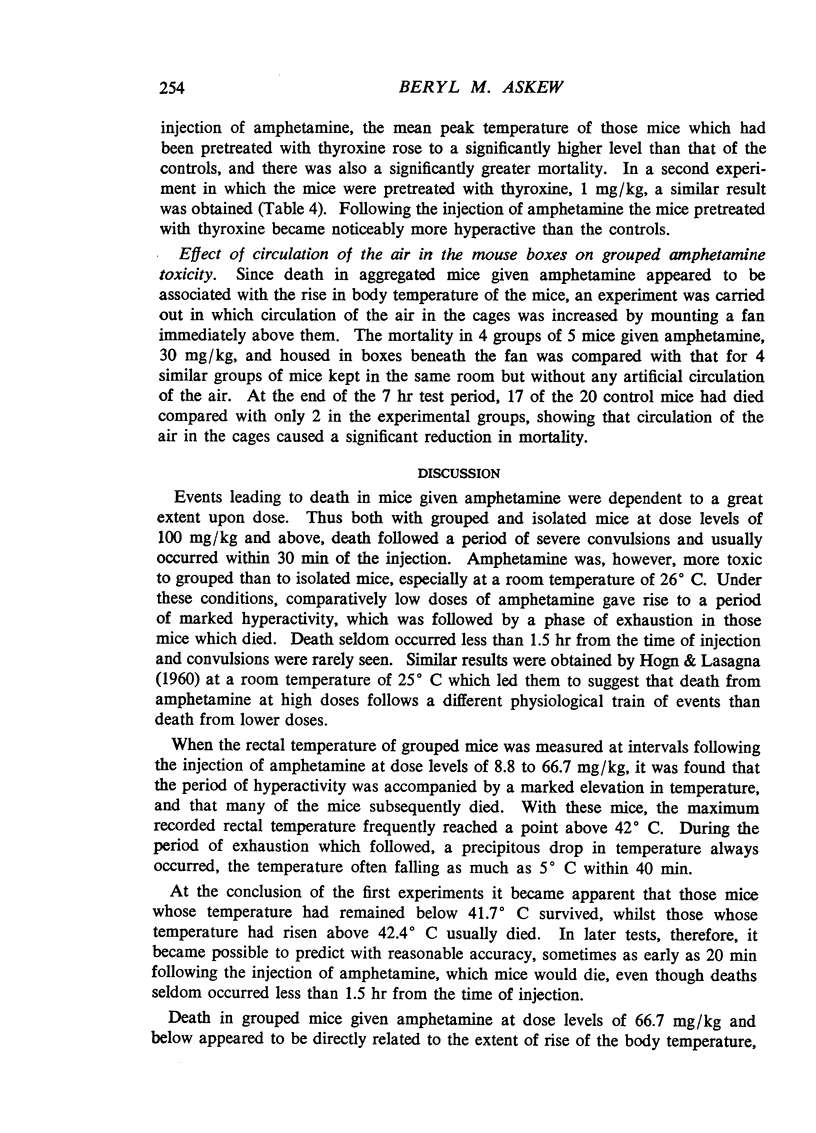
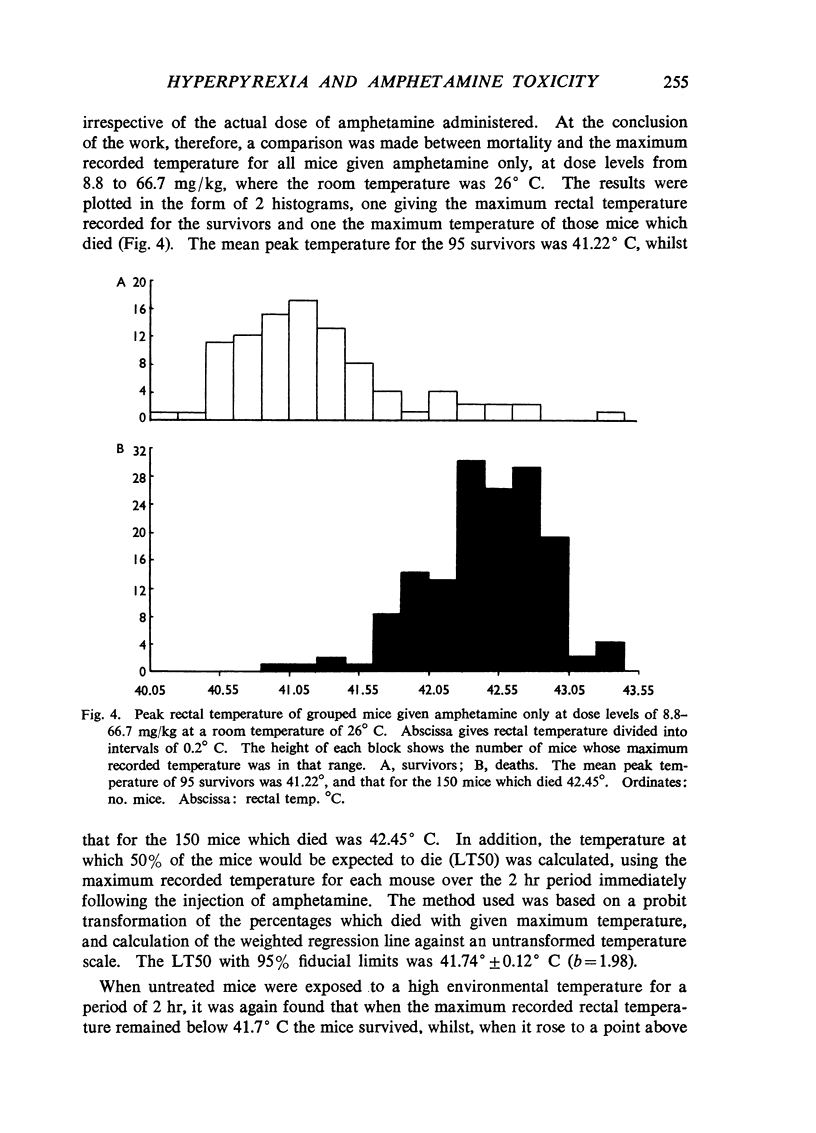
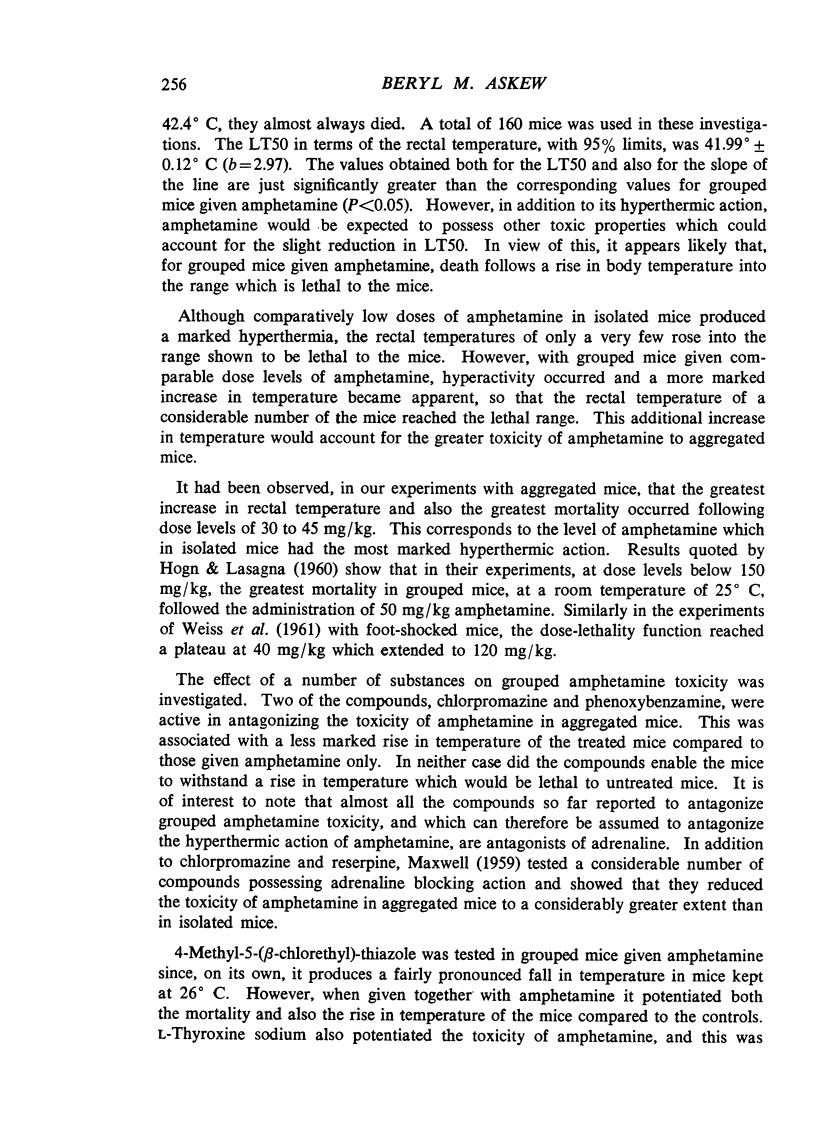
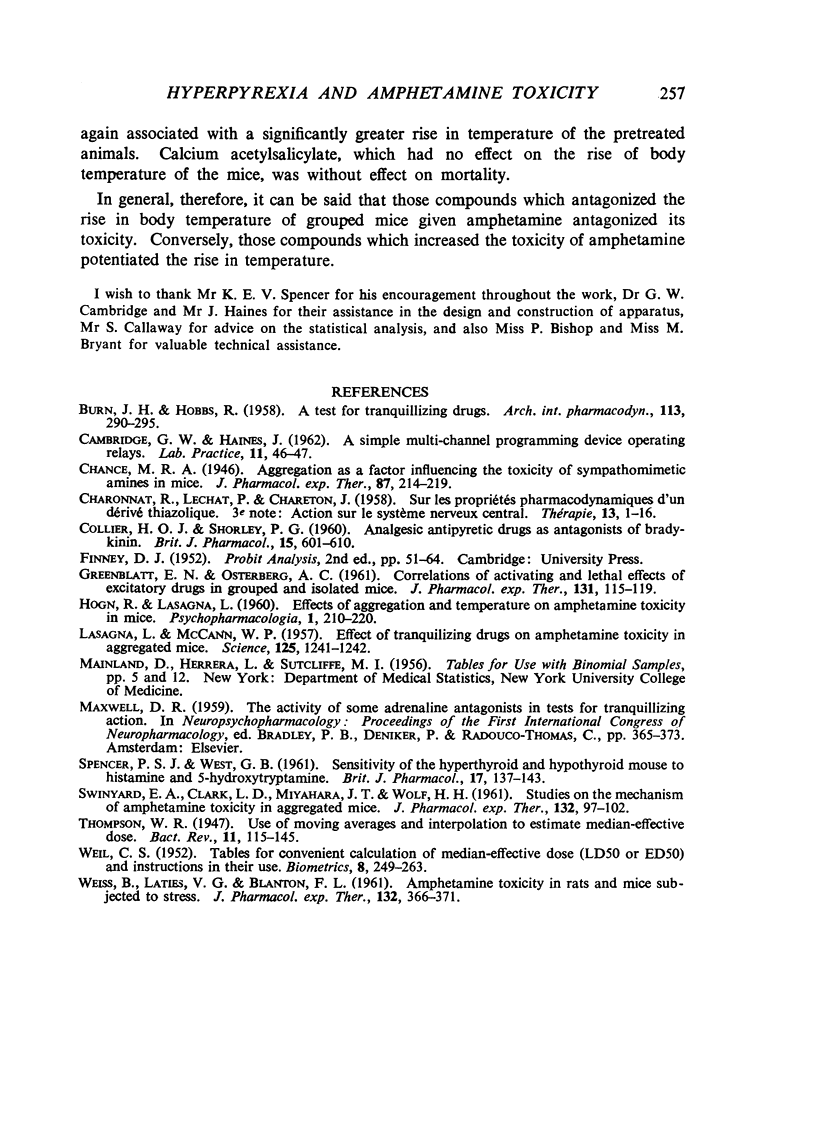
Selected References
These references are in PubMed. This may not be the complete list of references from this article.
- BURN J. H., HOBBS R. A test for tranquillizing drugs. Arch Int Pharmacodyn Ther. 1958 Jan 1;113(3-4):290–295. [PubMed] [Google Scholar]
- CHARONNAT R., LECHAT P., CHARETON J. Sur les propriétés pharmacodynamiques d'un dérivé thiazolique. III. Action sur le systeme nerveux central. Therapie. 1958;13(1):1–16. [PubMed] [Google Scholar]
- COLLIER H. O., SHORLEY P. G. Analgesic antipyretic drugs as antagonists of bradykinin. Br J Pharmacol Chemother. 1960 Dec;15:601–610. doi: 10.1111/j.1476-5381.1960.tb00288.x. [DOI] [PMC free article] [PubMed] [Google Scholar]
- GREENBLATT E. N., OSTERBERG A. C. Correlations of activating and lethal effects of excitatory drugs in grouped and isolated mice. J Pharmacol Exp Ther. 1961 Jan;131:115–119. [PubMed] [Google Scholar]
- HOEHN R., LASAGNA L. Effects of aggregation and temperature on amphetamine toxicity in mice. Psychopharmacologia. 1960 Feb 12;1:210–220. doi: 10.1007/BF00402742. [DOI] [PubMed] [Google Scholar]
- LASAGNA L., MCCANN W. P. Effect of tranquilizing drugs on amphetamine toxicity in aggregated mice. Science. 1957 Jun 21;125(3260):1241–1242. doi: 10.1126/science.125.3260.1241. [DOI] [PubMed] [Google Scholar]
- SWINYARD E. A., CLARK L. D., MIYAHARA J. T., WOLF H. H. Studies on the mechanism of amphetamine toxicity in aggregated mice. J Pharmacol Exp Ther. 1961 Apr;132:97–102. [PubMed] [Google Scholar]
- Thompson W. R. USE OF MOVING AVERAGES AND INTERPOLATION TO ESTIMATE MEDIAN-EFFECTIVE DOSE: I. Fundamental Formulas, Estimation of Error, and Relation to Other Methods. Bacteriol Rev. 1947 Jun;11(2):115–145. [PMC free article] [PubMed] [Google Scholar]
- WEISS B., LATIES V. G., BLANTON F. L. Amphetamine toxicity in rats and mice subjected to stress. J Pharmacol Exp Ther. 1961 Jun;132:366–371. [PubMed] [Google Scholar]


